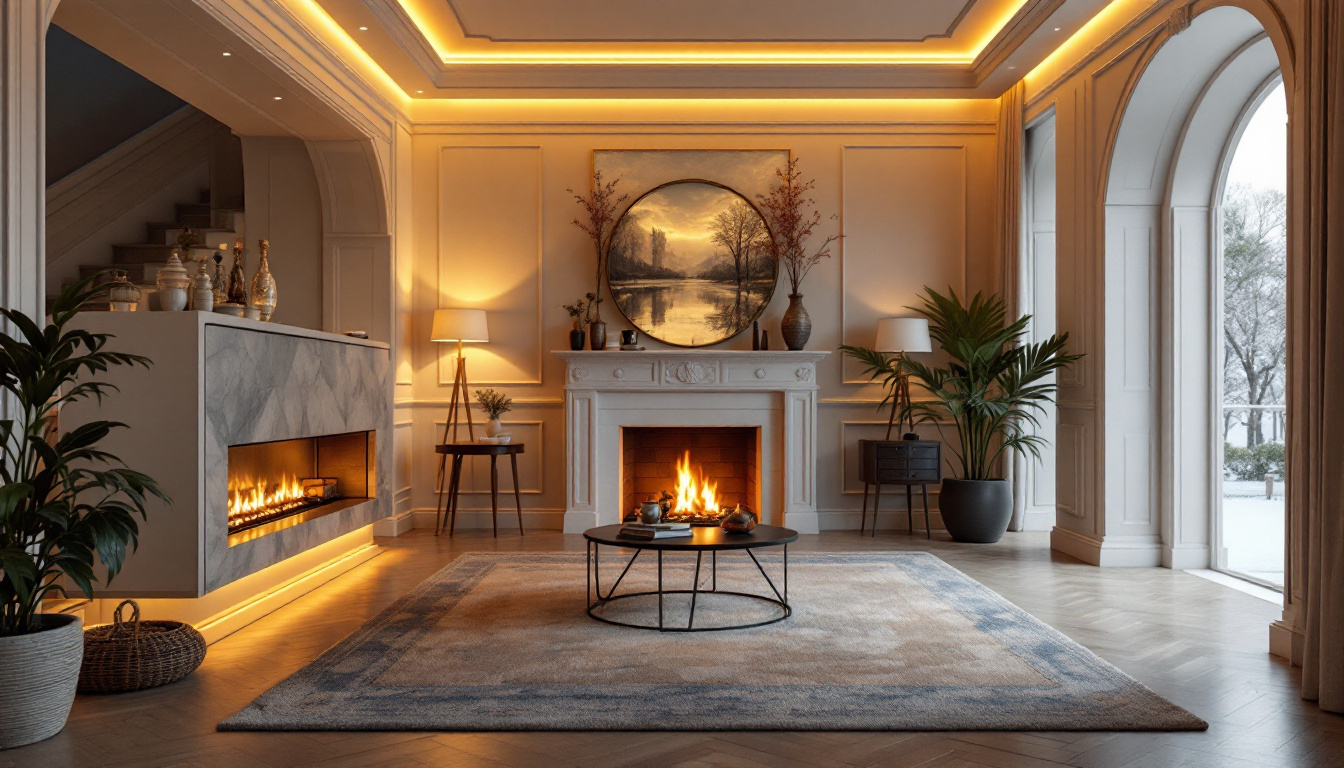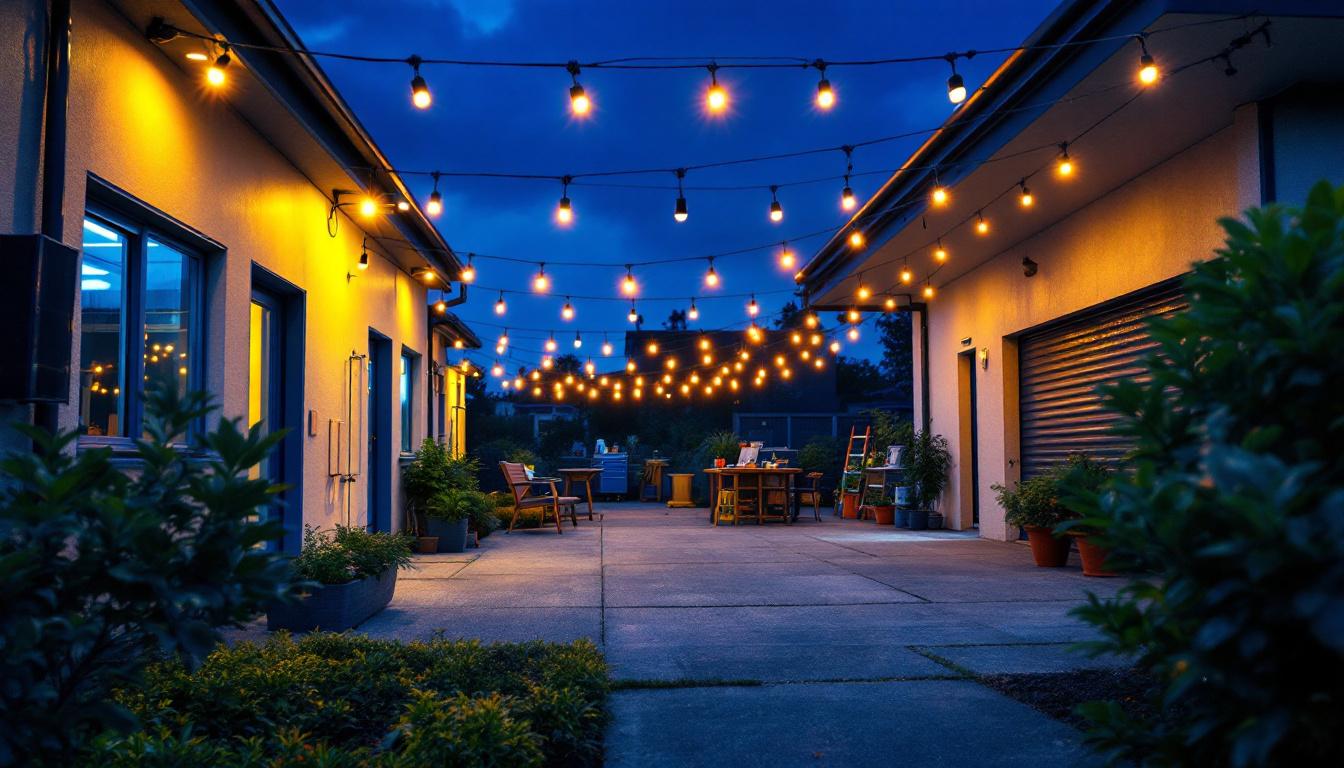
Cove lighting has become a popular choice for both residential and commercial spaces, offering a unique way to enhance ambiance while providing functional illumination. However, like any lighting project, there are potential pitfalls that can lead to costly mistakes. This article aims to guide lighting contractors through the essential considerations and common errors to avoid when planning and executing cove lighting installations.
Cove lighting refers to the indirect lighting technique where light fixtures are installed in recesses or ledges, typically located at the junction of walls and ceilings. This method creates a soft, diffused light that can enhance architectural features and set the mood of a space. The subtlety of cove lighting makes it an excellent choice for various applications, from homes to offices and retail environments. By utilizing the natural contours of a room, cove lighting can transform an ordinary space into one that feels both expansive and intimate, depending on the desired effect.
One of the primary advantages of cove lighting is its ability to create a warm, inviting atmosphere. Unlike harsh overhead lights, cove lighting provides a gentle glow that can make spaces feel more comfortable and welcoming. Additionally, it can help to highlight specific architectural elements or artwork, drawing the eye without overwhelming the viewer. This subtle illumination can also enhance the perception of height in a room, making ceilings appear taller and spaces feel more open.
Moreover, cove lighting is versatile. It can be used in various settings, including living rooms, dining areas, hallways, and commercial spaces. By adjusting the color temperature and brightness, lighting contractors can customize the ambiance to suit the specific needs of the space. For instance, in a dining area, a warmer light can create a cozy atmosphere for family gatherings, while in a workspace, cooler tones can help maintain focus and productivity. This adaptability makes cove lighting an invaluable tool in both residential and commercial design.
Despite its many benefits, cove lighting projects can go awry if not carefully planned. One of the most common mistakes is underestimating the amount of light needed for the space. Inadequate lighting can result in dark corners and an uninviting atmosphere. Conversely, over-lighting can lead to glare and discomfort. It’s essential to strike a balance based on the intended use of the space. Proper planning often involves calculating the lumens required for the area, which can vary significantly based on the room’s size and purpose.
Another frequent error is neglecting to consider the color temperature of the lighting. Different color temperatures can significantly affect the mood of a room. For instance, warmer temperatures (2700K-3000K) create a cozy environment, while cooler temperatures (4000K-5000K) can promote alertness and productivity. Choosing the wrong temperature can lead to a space that feels either too sterile or too relaxed. Additionally, it’s important to consider how the color of the walls and furnishings will interact with the light; lighter colors can reflect light more effectively, enhancing the overall brightness, whereas darker shades may absorb it, requiring more careful planning to achieve the desired effect.
Effective planning is crucial in avoiding costly mistakes in cove lighting projects. A well-thought-out design can help ensure that the final result meets both aesthetic and functional requirements. Here are some key considerations to keep in mind during the planning phase.
Before selecting fixtures or determining layout, it’s essential to assess the space thoroughly. Consider the dimensions, ceiling height, and existing architectural features. These factors will influence the type of cove lighting that will be most effective. For instance, higher ceilings may require more powerful fixtures to achieve the desired illumination level.
Additionally, evaluate how the space is used. A living room may benefit from softer, warmer lighting, while a kitchen or office may require brighter, cooler tones. Understanding the purpose of the space will guide decisions on fixture placement and lighting intensity. It’s also worth noting how natural light interacts with the area throughout the day. Large windows can create bright spots that might require adjustments in artificial lighting to maintain a balanced ambiance, while darker corners may need additional illumination to avoid creating shadowy areas.
The choice of fixtures is critical to the success of a cove lighting project. LED strip lights are a popular option due to their energy efficiency and versatility. They can be easily cut to length and installed in various configurations. However, it’s important to select high-quality LED strips that offer consistent brightness and color temperature.
In addition to LED strips, consider other fixture types such as recessed lights or wall-mounted sconces. Each option has its advantages and can create different effects when combined with cove lighting. The key is to choose fixtures that complement the overall design and meet the lighting needs of the space. For example, recessed lights can provide focused illumination for artwork or architectural features, while wall-mounted sconces can add a layer of texture and warmth to the room. Moreover, incorporating dimmers into your lighting design can enhance versatility, allowing you to adjust the ambiance according to different occasions or times of day, creating a dynamic atmosphere that evolves with your needs.
Proper installation techniques are vital for achieving the desired lighting effect and avoiding common pitfalls. Here are some best practices to follow during the installation process.
The positioning of cove lighting fixtures is crucial for achieving the right effect. Fixtures should be installed at an angle that directs light towards the wall and ceiling, allowing for a soft, diffused glow. This technique minimizes harsh shadows and creates a more inviting atmosphere.
Moreover, consider the height at which fixtures are installed. The ideal height will depend on the ceiling height and the desired intensity of the light. In general, fixtures should be placed high enough to avoid direct glare but low enough to provide adequate illumination.
Wiring is another critical aspect of cove lighting installation. Ensure that all wiring is done according to local codes and regulations. It’s also essential to consider the control systems that will be used. Dimming capabilities can greatly enhance the versatility of cove lighting, allowing users to adjust the brightness based on the time of day or activity.
Smart lighting systems can also be integrated into cove lighting projects, providing additional control and customization options. These systems allow users to change colors, set schedules, and control lighting remotely, adding a modern touch to any space.
Once the installation is complete, it’s crucial to test the lighting to ensure it meets the desired specifications. This step often reveals any issues that may need to be addressed before the project is finalized.
Conduct a thorough lighting assessment by observing how the cove lighting interacts with the space. Check for any areas that may be too dim or overly bright, and make adjustments as necessary. This assessment should also consider how the lighting looks at different times of the day, as natural light can significantly affect the appearance of artificial lighting.
In addition to visual assessments, consider using a light meter to measure the illumination levels throughout the space. This data can help identify any discrepancies and ensure that the lighting meets the intended design goals.
Involving the client in the final assessment is essential. Gather feedback on the lighting’s effectiveness and overall aesthetic appeal. Clients may have specific preferences or concerns that can help refine the final result. Be open to making adjustments based on their input, as this can lead to greater satisfaction with the project.
Ultimately, the goal is to create a lighting solution that not only meets functional requirements but also enhances the overall experience of the space.
Once a cove lighting project is complete, maintenance becomes a crucial aspect of ensuring the longevity and effectiveness of the installation. Proper maintenance can prevent issues that may arise over time and keep the lighting looking its best.
Conduct regular inspections of the lighting fixtures and wiring to identify any potential issues before they become significant problems. Look for signs of wear and tear, such as flickering lights or discoloration, which may indicate that a fixture needs replacing or servicing.
Additionally, check for dust and debris accumulation on fixtures, as this can impact the quality of light produced. Regular cleaning will help maintain optimal performance and extend the lifespan of the lighting system.
As technology continues to evolve, consider upgrading to newer lighting solutions that offer improved energy efficiency and functionality. LED technology, for example, has advanced significantly, providing better brightness and color accuracy than older models.
Staying informed about the latest developments in lighting technology can help contractors offer clients the best options available, ensuring that their cove lighting remains modern and effective.
Cove lighting offers a unique opportunity to enhance spaces through thoughtful design and installation. By understanding the common pitfalls and best practices, lighting contractors can avoid costly mistakes and deliver exceptional results. From planning and installation to maintenance, each stage of the project requires careful consideration to ensure that the final outcome meets both aesthetic and functional needs.
Ultimately, a successful cove lighting project not only illuminates a space but also elevates its overall design, creating an environment that is both beautiful and functional. By following the guidelines outlined in this article, contractors can navigate the complexities of cove lighting with confidence and skill.
Ready to take your cove lighting projects to the next level? At LumenWholesale, we provide lighting contractors with the high-quality, specification-grade lighting products you need to avoid costly mistakes and exceed client expectations. With our competitive wholesale pricing and commitment to cutting out the middleman, you’ll enjoy superior lighting products at the best value. Our extensive selection is designed to meet the highest industry standards, ensuring reliability and performance for any installation. Plus, with the convenience of free shipping on bulk orders, you can stock up on premium lighting without worrying about hidden fees. Elevate your lighting projects with the perfect blend of quality, affordability, and convenience at LumenWholesale. Wholesale Lighting at the Best Value is just a click away.

Discover how outdoor LED shop lights are transforming the landscape for lighting contractors.

Discover the top strategies lighting contractors use when selecting exit signs for sale.

Discover why Ushio Usa is an essential partner for lighting contractors.

Discover essential tips and strategies for lighting contractors to enhance their projects.